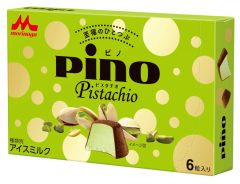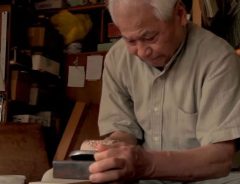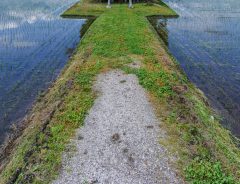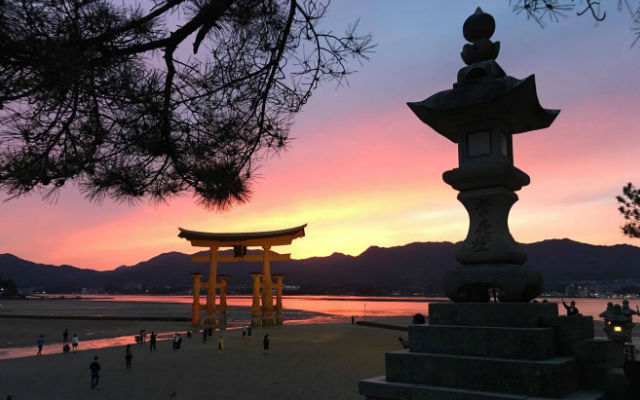- Source:
- @tomoko_kamitani/ / @kyototowerhotel_official / PR Times
- Tags:
- Castles / Chiba / Cool / Hiroshima / Instagram / Japan / Kanagawa / Kanazawa / Kyoto / Lists / Mie / Nara / Okinawa / Osaka / Rankings / Scenery / Shrines / Temples / Things to do in Japan / Tokyo / Tourism / Trip Advisor / Wakayama
Related Article
-

Studio Ghibli’s “The Red Turtle” Nominated For Academy Award’s Best Animated Feature Film
-

Horror manga master Junji Ito teams up with fashion brand for terrifying Tomie T-shirts
-

Morinaga adds pistachio flavour to it’s Pino ice cream collection this summer
-

Watch A Visually Stunning Display Of Hakone Marquetry By A Japanese Crafts Master
-

Now is the best season to photograph Japan’s “shrines that appear out of nowhere”
-

This Enormous Japanese Pigtails Pillow-Bed Will Swallow You Whole



When traveling in Japan, sometimes the most rewarding experience can come from "getting lost" in the country and finding hidden gems not promoted in guidebooks and top ten lists. For first-timers, however, the plethora of fascinating areas to explore in Japan can be overwhelming, so it's not a bad idea to consult with the opinions of those who have been there before you. While you may end up in some tourist-heavy spots, you'll usually find yourself at least getting a good feel for what is considered "must-see" in Japan, as well as some lesser explored areas mixed in. This year Travel website Trip Advisor released their 9th annual list of most popular tourists spots, as chosen by travelers to Japan from around the world.
Here are the top 30, which has a few surprising spots outside of the major known ones.
30. Sanjusangendo Temple (Kyoto)
Japan's longest wooden structure is famous for its 1001 statues of Kannon, the goddess of mercy. In the center of the temple's main hall sits the 1000-armed Kannon (Senju Kannon), surrounded by 500 human-sized Senju Kannons. The annual Toshiya archery tournament has been held there since the Edo period.
29. Kyoto Station Building (Kyoto)
Kyoto boasts Japan's second-largest station building, and the building houses many useful facilities for tourists, including an Isetan Department store, shopping mall, movie theater, and many restaurants and shops to load up on souvenirs. It also stands right across from Kyoto Tower.
28. Lake Kawaguchiko (Yamanashi)
The most accessible of the Fuji Five Lakes, Lake Kawaguchi is regarded as one of the best places in Japan to catch a scenic view of Mt. Fuji, and provides visitors with a beautiful photography source regardless of the season. The eastern end of the lake has a hot spring resort town to sooth weary travelers as they take in the brilliant view.
27. Nabana no Sato (Mie)
One of Japan's biggest and brightest illumination displays, the annual Winter illumination features yearly themes using 1.2 million light bulbs, in a 200 meter-long tunnel. The radiantly lit tunnel can even recreate walking under an archway of cherry blossoms.
26. Naritasan Shinshoji Temple (Chiba)
A beautiful Buddhist temple located nearby Narita airport, making it a popular stop for tourists returning home or curious travelers with a long layover. Part of the experience is Naritasan's Omotesando, a bustling street lined with shops and restaurants where visitors can try out traditional crafts and food.
25. Ryogoku Kokugikan (Tokyo)
The heartland of sumo wrestling's grand sumo hall (although you can also catch professional wrestling there) provides visitors with a historic venue to watch one of Japan's traditional sports. After catching a sumo bout or two, visitors are recommended to try a restaurant in the area for Chanko nabe, the staple hot pot dish of sumo wrestlers.
24. Mt. Misen (Hiroshima)
Miyajima's stunning Itsukushima Shrine, a World Heritage Site, is the main attraction of the Hiroshima island, but Mt. Misen is not to be missed as well. Accessible via ropeway, the mountain top provides spectacular views of the Seto Inland Sea and beautiful nature paths to hike around.
23. ROR Comedy (Osaka)
Source: PR Times
Kansai's all-English stand up comedy group features an international line-up of comedians who often offer some humorous insight into daily Japanese life. After taking in many of Western Japan's sights and sounds, a welcome laugh to end the day.
22. French Drop (Osaka)
Source: PR Times
French Drop's second floor is an actual magic shop, but the star of the show is on the store's first floor, where patrons can sit down at the counter and enjoy a drink while being entertained with a variety of interesting magic tricks. The small and intimate bar setting puts you up close to the performance, and language barrier doesn't seem to be an issue for the many foreign guests who rave about the experience.
21. Meiji Jingu Shrine (Tokyo)
Dedicated to the spirits of Emperor Meiji and his consort, Empress Shoken, the complex of shrine buildings are located in a calm forest area that is hard to believe is only ten minutes removed from the vibrant Harajuku area. One of Japan's most popular shrines, Meiji Jingu draws more than three million guests during the first prayers of the New Year, by far the most in the country.
20. Edo-Tokyo Museum (Tokyo)
Ryogoku district's Edo-Tokyo Museum traces the history of Japan's capital from the Edo period to recent times. Interactive exhibits offer great insight into what would later become Tokyo, outlining architecture, culture, and overall way of life via fascinating figurines and models.
19. Matsumoto Castle (Nagano)
One of Japan's oldest castles, Matsumoto Castle is distinct in that it is built on a flat plain and not a mountain, and retains much of its original structure, which allows for a unique wooden interior. Listed as a national treasure of Japan, Matsumoto Castle carries the nickname "Crow Castle" because of its dark exterior. The area outside the castle is a popular cherry blossom viewing spot in the Spring, offering an obviously picturesque backdrop to help take in the sakura.
18. Okinawa Churaumi Aquarium (Okinawa)
The third largest aquarium int he world and perhaps the best in Japan, Okinawa's Churaumi Aquarium is spread out over three floors and contains a spectacular main tank with breathtaking whale sharks and manta rays. The sprawling aquarium gives visitors a very up-close look at the vibrant marine life surrounding the beautiful Okinawa area.
17. Daishoin Temple (Hiroshima)
Daihonzan Daisho-in is the oldest temple on Miyajima, and is most noted for the 500 statues that stand outside the temple, warding off evil spirits. It is conveniently located that the heavily forested base of Mt. Misen, giving the spiritual temple a very serene atmosphere.
16. Hase-dera Temple (Kanagawa)
Hase-dera temple hosts yet another famous statue of the goddess Kannon, this time an eleven-headed one! Located on the slope of a hill, those who come to see the 9.18 meter tall statue can also take in pleasant views of Kamakura and enjoy an adjacent museum and restaurant stocked with traditional Japanese sweets.
15. Samurai Kembu Theater (Kyoto)
At the Samurai Kembu Theater, both Japanese and visitors from overseas can witness a demonstration of kembu (sword dance), a traditional Japanese art form performed with a katana and fan to song and dance. Visitors can then take fully costumed lessons to learn a routine of their own.
14. Kenrokuen Garden (Kanazawa)
Kenrokuen is ranked alongside Kairakuen (Ibaraki) and Korakuen (Okayama) as one of Japan's "three most beautiful landscape gardens" or Three Great Gardens of Japan. The garden provides a pleasant stroll with year-round scenic views.
13. Himeji Castle (Hyogo)
Himeji Castle, both a national treasure and a World Heritage Site, is widely regarded as Japan's most outstanding castle. Unblemished by natural disasters, the hilltop complex is perhaps the best surviving display of Japanese castle structure and architecture. Like the "Crow Castle", it has a nickname of White Heron Castle, as the imposing white exterior is said to resemble a bird about to take flight.
12. Eikando Zenrinji Temple (Kyoto)
Well-known for its vibrant autumn colors (koyo), the temple houses a garden pond as its outdoor centerpiece, with the famous the sideways facing Amida statue and pagoda, which provides a well-sought after view in the Fall.
11. Nara Park (Nara)
Located in central Nara, the park gives visitors quick access to many of Nara's popular attractions such as Todai-ji (coming later in the list), Kasuga Taisha, and the Nara National Museum. Most striking about the park are the many deer you will find freely roaming around the park. They've been branded as a symbol for Nara and are very anxious to see if you have any food for them. Buy some special deer rice crackers to feed them, and if you're lucky some of them will even bow to you to try and earn a treat!
10. Koyasan Okunoin (Wakayama)
The sacred Mt. Koya's forest surroundings house a temple complex and mausoleum for Kobo Daishi, known as the founder of the Shingon sect of of Japanese Buddhism. The popular pilgrimage spot features 200,000 uniquely shaped headstones, and it is said that the lights there have been burning ever since Kobo Daishi's death. It is often recommended to visit at night for a tranquil but somewhat haunting experience.
9. Hakone Open-Air Museum (Kanagawa)
The Hakone Open-Air Museum features indoor sculptures as well, but is distinct in that the large outdoor sculptures have the beautiful backdrop of the grand nature of Hakone to serve as their backdrop. A permanent exhibition displays 120 works of art of master modern sculptors, along with a collection of roughly 300 Pablo Picasso works.
8. Kinkakuji Temple (Kyoto)
Among Kyoto's countless cultural wonders, the Golden Pavilion Kinkakuji remains one of its most iconic. An absolute gorgeous sight at any time of year, (although it is notably stunning under a blanket of snow) the extravagant structure's two top floors are covered in gold leaf, and overlooks a gentle pond. Burned down numerous times throughout history and most recently in 1950 by a mad monk, the Zen temple's restoration efforts have been conducted as accurately as possible, with each floor introducing a different style of architecture.
7. Shinjuku Gyoen National Garden (Tokyo)
It can often be hard to find peace of mind in the hustling and bustling heart of Tokyo, but the spacious park that dates back to the Edo Period offers three different types of gardens (Japanese, English, and French landscape gardens) and is a great place to admire nature and relax even in a sprawling metropolis.
6. Kiyomizu-dera Temple (Kyoto)
Todaiji's Daibutsuden (Big Buddha Hall) is regarded as the world's largest wooden building, and it's only been reconstructed to a fraction of its original side. As the name suggests, inside is a massive bronze Buddha statue. As you approach the impressive structure, you'll no doubt be greeted by some very curious and hungry Nara deer.
4. Miyajima (Itsukushima Shrine) (Hiroshima)
Source: Grape Japan
Itsukushima Shrine is known as one of the three most scenic spots in Japan, and it beautifully lives up to that title. It's known for it's "floating" Tori gate, as the gate and shrine built over water appears to float during high tide. Timing is key when visiting Itsukushima, but even during low tide visitors can go down and see the attraction up close, and the island has more than enough to see if you need to wait things out.
3. Hiroshima Peace Memorial Museum (Hiroshima)
The Peace Memorial Museum is a somber but important and fulfilling experience. It is unwavering in detailing the history of Hiroshima before, during, and after the dropping of the atomic bomb. The museum details the destruction and suffering that followed the bombing, including personal items belonging to victims of the bomb. While unsettling in some aspects, the museum's main goal is to promote peace through a sobering reminder of the alternative.
2. Akiba Fukurou (Tokyo)
Akihabara is known mostly to tourists as Japan's mecca of tech, geek, and anime culture, which is why one of the most prominent businesses in the district are Maid Cafes. Akihabara is no stranger to the animal-themed cafes that have become popular all over Japan, however. Although some may feel uncomfortable with the concept depending on the type of animal (cat cafes are the main type, but hedgehog cafes have recently caused some controversy), Akihabara's owl cafe--which allows you to enjoy coffee in the company of owls--is a popular stop for foreign visitors. We went to one in Kamakura last year, if you want to see what it's like inside.
1. Fushimi Inari-taisha Shrine (Kyoto)
Source: Grape Japan
Not surprisingly, Fushimi Inari tops the list of popular travel destinations among foreign visitors. The seemingly never-ending mountain trails lead visitors under thousands of vermilion torii gates (Senbon Torii). To reach the top, you'll need a good two or three hours, but along the way one can leisurely stop and take in gorgeous views of Kyoto from different vantage points, as well as many smaller shrines and restaurants offering regional food. Traversing the mountain trail and gates, it is not uncommon for visitors to remark that they feel as if they were traveling back in the time the further they hike. The shrine is dedicated to Inari, the Shinto goddess of rice, whose messengers were thought to be foxes. Because of this, you'll spot many fox statues and some cute fox merchandise along the hike.